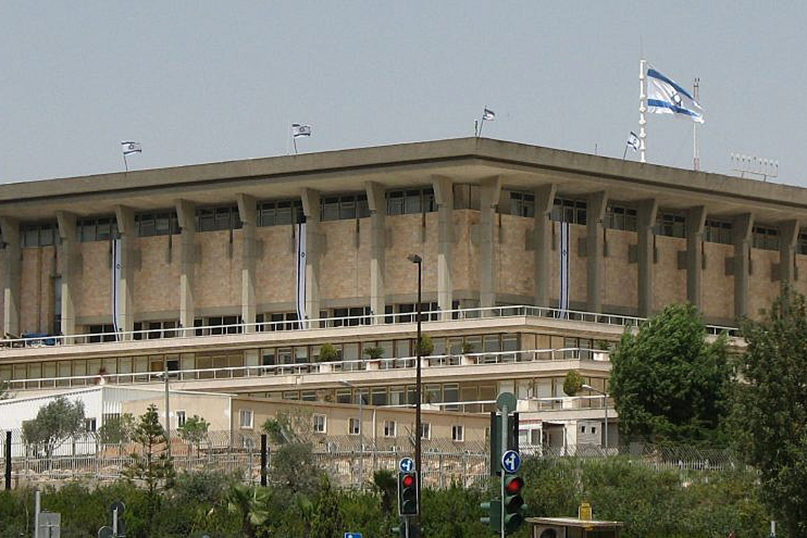
By Jeremy Saltan
(JNS) In less than two weeks since Israeli Prime Minister Benjamin Netanyahu’s governing coalition voted to dissolve and go to early elections, Israel’s political map is beginning to restructure for the first time in decades. Multiple new parties have been registered and several existing parties have shattered, as early talks of new political alliances will be given the opportunity to incubate.
Many of the political shifts indicate the personalization of the political process, whereby smaller parties are emerging around the candidates leading them, at the expense of longtime party loyalties.
The single noteworthy exception to the new trend is Netanyahu’s ruling Likud Party, which has only grown stronger in recent weeks, with talks of smaller parties joining the Likud ranks as opposed to candidates defecting.
Outside of the Likud Party, there have been several noteworthy developments. Former Israel Defense Forces’ Chief of Staff and political newcomer Benny Gantz announced that he would forego offers to join established parties, opting instead to form a new independent party named Israel Resilience. Gantz is currently polling in a distant second place to Netanyahu’s Likud, though scenario polling shows Gantz much closer if his party links together with other ideologically aligned parties.
Newly appointed Zionist Union leader and Labor Party chairman Avi Gabbay chose to end his political union with Tzipi Livni’s Hatnuah Party. Gabbay fired Livni as leader of the opposition, and instead tapped key Labor Party ally Shelly Yachimovich for the post.
In a surprise move, longtime Jewish Home Party leaders Education Minister Naftali Bennett and Justice Minister Ayelet Shaked, announced that they would break off from the Jewish Home and create the New Right Party.
The electoral threshold
By February 21, all parties must submit their list of candidates for the election on April 9.
The raising of the electoral threshold during the 2015 election cycle to 3.25 percent of total votes, an equivalent of nearly four parliamentary seats, proved too steep a challenge for smaller parties hoping to enter the Knesset.
Following the 2015 elections, ten factions were elected to the 20th Knesset, tying a record for the fewest number of parties, with several smaller parties missing the cut. Small parties in the current election cycle will be watching the polls closely ahead of the February deadline before deciding on strategic alliances that can propel united smaller parties over the threshold.
As such, the division of parties and the formations of new political entities witnessed over the last two weeks will likely lead to mergers over the next seven weeks.
It appears that 2019 may have a higher number of parties entering the parliament, though many parties are polling within just a few seats of the electoral threshold, leaving their fortunes very much in doubt unless they combine factions together through vote-sharing alliances.
Center-right
There have been rumors that the Kulanu Party led by current Finance Minister Moshe Kahlon will run on a joint ticket with the Likud. With Kulanu’s drop in the polls and the departure of top Kulanu members including current Immigration Minister Yoav Galant, former Ambassador to the United States Michael Oren and Jerusalem mayoral candidate Rachel Azaria, it becomes increasingly clear that Kahlon – himself a former Likud member – is unlikely to run without joining forces with another party.
Former Defense Minister Avigdor Lieberman’s Russian Yisrael Beyteinu Party, which has run in the past on joint tickets with other parties, including the Likud in 2013, could do so again.
Former Defense Minister Moshe Ya’alon, once a Likud Party member, announced that he would create a new party named Telem, reviving the old party name of former Defense Minister Moshe Dayan. The party, which is currently polling under the threshold, is similarly likely join forces with another faction.
Independent Knesset Member Orly Levy announced that she would resurrect the Gesher Party, previously led by her father and former Likud Foreign Minister David Levy. Gesher is also likely to run together with another party.
Religious parties
There have been rumors that longtime Sephardic political party Shas will run together on a joint ticket with the Ashkenazic political party United Torah Judaism, representing the first time the two religious sectors would form a unified party. Such an alliance would ostensibly strengthen their collective bargaining position during the coalition-forming phase following the elections.
Meanwhile, Adina Bar-Shalom –daughter of former Sephardi Chief Rabbi Ovadia Yosef, who himself was a founder and spiritual leader of the Shas Party – has announced the formation of a new religious party named Achi Yisrael.
Right-wing
On the right side of the political map several smaller parties are not expected to pass the electoral threshold, including the Otzma Yehudit Party, led by supporters of former right-wing Knesset Member Meir Kahana; the Yachad Party, led by former Shas Party chairman Eli Yishai, which barely missed the electoral threshold in 2015; and the Zehut Party, led by former Likud Knesset Member Moshe Feiglin.
Discussions are already underway regarding the creation of a new right-wing National Union party that would encompass smaller right-wing religious parties, including the Jewish Home party’s Tekuma faction led by Minister of Agriculture Uri Ariel, and Yishai’s Yachad Party, with the Otzma or Zehut parties possibly joining as well.
Left-wing
It is possible, though unlikely, that the Yesh Atid Party, led by former television personality and former Finance Minister Yair Lapid, may link with Avi Gabbay’s Labor Party, or former Chief of Staff Benny Gantz’s Israel Resilience Party to create a strong center-left block to challenge Netanyahu’s Likud. Smaller parties on the center-left, such as Tzipi Livni’s Hatnuah Party, could also run on joint tickets with other parties. Several Zionist Union party members unhappy with Gabbay’s public sacking of Livni have considered running on a joint ticket with the far left-wing Meretz Party, led by Tamar Zandberg.
Several smaller left-wing parties that have failed to pass the electoral threshold in previous campaigns are also running in the current election. Journalist and political pundit Eldad Yaniv has resurrected his old party Eretz Hadasha, and the pro-cannabis legalization Green Leaf Party has announced it will enter the race. A new Israeli-Arab party named Ofek Chadash will run as well.
With so many parties taking part in this election, the question of how to divide them traditional right versus left political blocs becomes more challenging. Of the 22 parties currently running, 14 parties are currently all polling within one or two seats above or below the electoral threshold, many within polls’ margins of error. Many party leaders will be forced to make compromises and political alliances, or risk not making it through to the parliament.
‘Who do I trust?’
Thus far, the public has demonstrated its willingness to put their trust in parties led by popular leaders, even when the full candidate lists have yet to be announced. So, while Israelis may technically vote for a political party, in reality they are voting for the party leader they like best.
Rather than voting on an entire slate of parliamentarians on a single ticket, the Israeli electorate now appears ready for an alternative voting pattern, asking the questions: “Which party leaders do I like the most?” and “who do I trust the most?”
Meanwhile, the stalwart Likud Party led by Netanyahu – the largest personality in all of Israeli politics – has double digit leads over any other individual party. In many respects, the upcoming election is as much a referendum on Netanyahu’s personality, leadership and looming corruption charges, as on any other political issue.
Jeremy Saltan is a longtime analyst of Israeli elections and a political consultant. His Knesset Insider composite polling average, prepared for JNS, can also be found at http://www.KnessetJeremy.com.
CAP: The Knesset Plenary Hall during speeches ahead of the vote on the National Law, on July 18, 2018. Photo:Hadas Parush/Flash90.








 Southern New England Jewish Ledger
Southern New England Jewish Ledger







